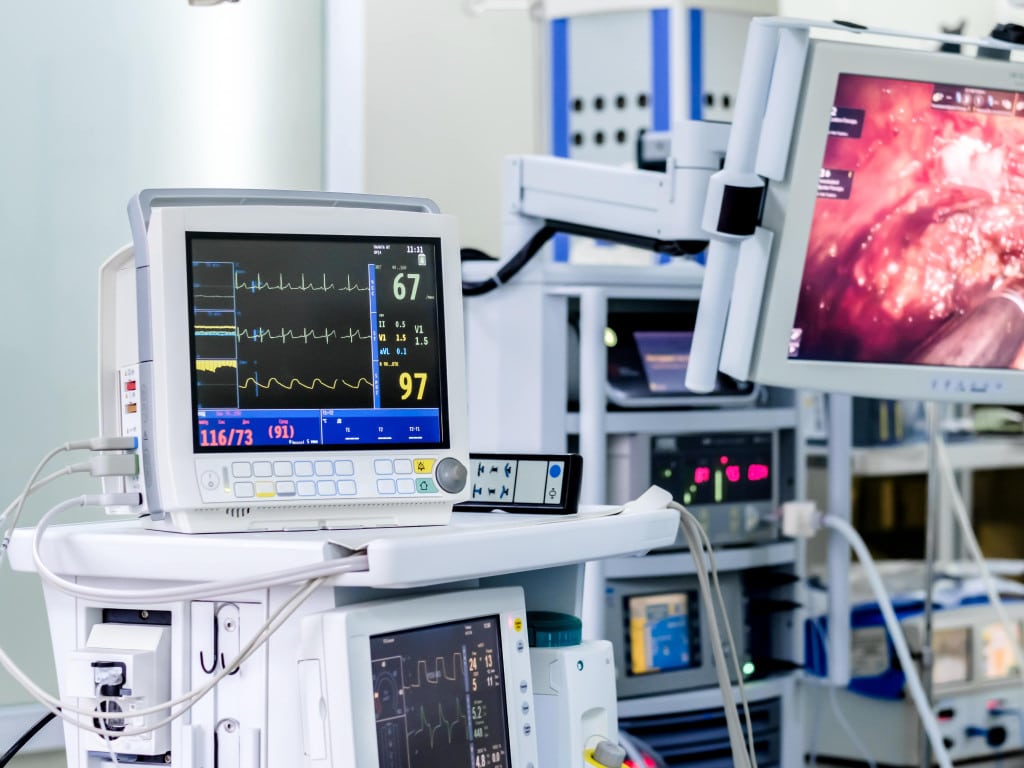FDA approval is the Grail for any medical product developer and manufacturer, brand-owner and startup. Lacking it, access to the most lucrative medical markets is entirely impossible – to a large extent, even in the regions that lie outside FDA registration control.
It is of paramount importance in the healthcare sector, as the defining and reference standard for the manufacturing of medical devices and ancillary products. The U.S. Food and Drug Administration (FDA) is responsible for regulating and supervising the safety, effectiveness, and quality of products;
pharmaceutical drugs; medical devices; food; and cosmetics, to assure public health. But its reach is global – not by regulation but by market assent.

While intricate and hard to achieve, FDA regulatory approval is an eminently reachable target for most serious businesses.
The FDA classifies medical devices in three categories based on their level of risk to patients and users:
- Class I: Low-risk devices, such as non-powered wheelchairs and hand-held surgical devices.
- Class II: Moderate-risk devices, like powered wheelchairs and infusion pumps.
- Class III: High-risk devices, such as implantable prosthetics and heart valves.
Medical devices in the United States must have FDA certification, to be brought to market. The regulatory pathway depends on the device’s classification:
- Class I Devices: Typically subject to controls on labeling (claims) and adherence to good manufacturing practices. With highly moderated or no patient contact and no direct diagnostic role, these devices are lightly – but thoroughly – regulated.
- Class II Devices: This imposes deeper controls, which include performance standards, after-sales performance/quality surveillance, and patient data registries. As patient contacting devices that are non-intrusive, these are much more tightly regulated than Class I.
- Class III Devices: These typically undergo pre-market approval (PMA) to validate safety and efficacy. This involves comprehensive clinical data acquisition/analysis and rigorous testing, to prove their safety and efficacy in direct patient contact in diagnostic and intrusive roles.
The FDA approval process varies depending on the device’s classification.
- For most Class II devices, manufacturers can submit a 510(k) premarket notification. This is to demonstrate that the new device is substantially equivalent to a legally marketed predicate device in terms of safety and effectiveness.
- For Class III devices and some high-risk Class II devices, manufacturers must undergo the PMA process. This requires submission of extensive scientific evidence, including clinical data, to demonstrate the device’s safety and efficacy.

Benjamin S

Mechanical Engineer
"I wish this existed years ago!"
Jiga is the best way to get the parts you need, when you need them.
FDA approval for medical devices provides several crucial benefits
- The FDA certification process ensures (and gives assurance) that medical devices meet the published safety and performance standards.
- Through rigorous and classification-proportional clinical data evaluation, the FDA verifies that the device performs as intended and provides the expected patient efficacies.
- FDA approval is a prerequisite for legally marketing medical devices in the United States, and widely viewed as necessary for all developed-world market access.
- FDA approval enhances the device’s credibility and confidence among healthcare professionals, patients, and funders.
Manufacturers in the healthcare sector must comply with the gamut of relevant international standards, such as ISO 13485 (Quality Management System for Medical Devices) and ISO 14971 (Risk Management for Medical Devices). These standards evaluate and demonstrate that the design,
manufacturing, and case evaluation processes are in accordance with international best practices and regulatory requirements.
FDA approval is the main guardrail in ensuring the safety, efficacy and quality of medical devices across all US healthcare sectors. Manufacturers must comply with the process, or be excluded from the market.
Design and Materials: Prototyping and Biocompatible Choices
Prerequisites for FDA approval for medical devices in design and materials used in the prototyping process are crucial in the certification process. Ensuring biocompatibility of materials is a functional and regulatory imperative, to ensure patient safety.
Design considerations:
- Clearly define the intended use of the medical device and identify user needs. A well documented and thorough understanding of the device’s purpose and target users is an imperative driver of the design process.
- Prioritization of patient and user safety during the design phase must be documented for review in the approval process. Demonstrating iteration based on use-feedback shows thoroughness of process that aids an application.
- Implementing (and documenting) FDA and ISO standard compliance in design controls shows intent and compliance in managing the design process
- Performing verification and validation testing gives quantifiable assurance that the product performs as intended.
Material choices:
- In patient contact/intrusion roles, materials must be biocompatible and harm-free. Testing to ISO 10993 is necessary to ensure appropriateness in material choices.
- Consider the properties of materials to ensure they can endure the device’s intended environment and period of use.
- Where the device requires sterilization, select materials that are compatible with the chosen sterilization method(s); ethylene oxide, gamma radiation, autoclave etc.
- Maintain traceability of materials used in the device to ensure quality control and facilitate in-market evaluation. Certificated suppliers, bonded supply chains and Certificates of Conformity are typically required.
Prototyping:
- Exploit the full range of prototyping techniques such as 3D printing, CNC machining and hand
fabrication, to produce functional prototypes for testing and validation. Select materials/processes with care to ensure zero contamination and sufficient compatibility, where patient contact is required.
- Expect multi-generational prototyping, to validate design iterations made based on feedback and testing results.
- Prototyping serves to demonstrate feasibility and functionality before commencement of manufacturing. Good record of, and retention of prototypes allows review and re-affirmation of decision making processes.
Biocompatibility:
- Compliance with the ISO 10993 standards for biological evaluation of medical devices is a certification duty. This must encompass testing for cytotoxicity, sensitization, irritation, and other esoteric biocompatibility issues.
- Risk assessment identifies potential hazards related to materials and their biocompatibility. Ensure detailed recording the review and the efforts made to mitigate any identified risks.
- Biocompatibility testing on the device and its materials demonstrates conformance with the intended application.
- Clinical tests and relevant literature searches will validate the biocompatibility of the materials used.

Manufacturing Processes: Injection Molding, CNC, 3D Printing, Sterilization
FDA-approved manufacturing processes are subject to assiduous and prescriptive regulation and standards assessment, to ensure the safety, efficacy, and quality of the end products.
- Injection molding is the prevalent method of manufacturing for producing plastic, and increasingly for metal parts. Manufacturers commonly use the process to produce plastic components such as syringes, catheters, stents, and connectors. They are increasingly using sintered powdered metal, which they have injection molded before sintering, for high volume metal parts.
- The materials used in injection molding must be biocompatible, uncontaminated by the processing and suited to the intended use.
- Injection molding facilities must conform to good manufacturing practices (GMP) and have effective and documented quality control measures and production records.
- Computer Numerical Control (CNC) machining Manufacturers use CNC Machining to create medical device components from metal or plastic raw materials for lower production volumes. Fewer process/supplier restrictions apply, but manufacturers must adhere to the fundamentals of effective quality assurance and material traceability.
- Like injection molding, the materials processed through CNC machining must be biocompatible and appropriate for medical device use.
- CNC machined parts must meet the required precision and repeatability for the products functional requirements.
- 3D printing is extensively used to create prototypes, patient-specific devices, surgical guides, and more.
- The choice of processes and materials for 3D printing must be biocompatible (where relevant) and suitable for the application, presenting no risk to patients or users.
- Using experienced prototyping services who already meet FDA requirements in this is a wise choice.
- Sterilization is pivotal in assurance of patient safety, assuring that materials are free from toxic residues and microorganism infection sources. Sterilization processes must be validated to confirm material compatibility and effective sanitization

Javier L

Principal Systems R&D Mechanical Engineer
"Game changing in the online manufacturing space"
Jiga is the best way to get the parts you need, when you need them.
How to Get FDA Approved
FDA approval for a medical device or drug is a complex and multi-layered process that demands great rigor from the design owner/originator, the design validation processes, the design and production process documentation and most of all the regulatory submissions. The process varies considerably with type and classification of product. The simplified steps are;
Identify the classification applicable to the program, in accordance with the FDA’s classification system (Class I, II, or III). This determines the regulatory pathway and the intensity of scrutiny demanded for approval.
Thorough preclinical testing is required – laboratory studies and animal testing for example – to evaluate the device’s safety and effectiveness. The implementation of FDA required design controls will ensure that learnings from this testing are demonstrably integrated in the design.
For particularly high-risk devices such as implantable, you may be required to submit an Investigational Device Exemption (IDE) application to conduct clinical trials. For lesser risk products, a pre-submission meeting with the FDA can be highly beneficial, getting early feedback on your planned application.
Clinical trials on human subjects will allow you to gather data on the device’s safety and efficacy. The scope and implementation of such trials depends on classification and intended use.
Compile all the required data, documents and test results to support your application. This will detail the device’s design process, manufacturing processes, supply chain management, preclinical and clinical trial data and labeling/claims.
Submit a premarket notification, 510(k), to the FDA if your device can be interpreted as substantially equivalent to an already FDA approved product, known as the predicate device. Where the product is considered high-risk, or has no suitable predicate, you will likely be required to submit a Premarket Approval (PMA) application.
The FDA will perform a detailed review of your submission, evaluating the safety and efficacy of your product. This involves iterative steps of questions and responses, proportional to the complexity of the product and submission detail.
After FDA approval is granted, but prior to marketing your product, you must register your manufacturing facility with the FDA and list your device in the FDA’s database. A pre-existing medical product supplier that is already compliant will shorten this process considerably.
With approvals granted and market entry progressing, you will be required to comply with in- market surveillance requirements and demonstrate continued monitoring of safety and performance. Reports of any adverse events and correction plans must be submitted to the FDA.
Drug approvals involve extensive clinical trials, New Drug Application (NDA) or Biologics License Application (BLA) submissions, and thorough evaluations by the FDA’s Center for Drug Evaluation and Research (CDER) or Center for Biologics Evaluation and Research (CBER). The drug approval process is beyond the intent of this blog.
Medical Device Manufacturing Standards
The FDA has established controlling standards and regulations to govern manufacturing. These cover all aspects of the manufacturing process and are key to getting and maintaining FDA approval.
Quality System Regulation (QSR)
- 21 CFR Part 820, also commonly referred to as the FDA’s Good Manufacturing Practices (GMP), defines the general requirements for the design, manufacturing, packaging, labeling, and distribution of medical devices. It covers management responsibility, design controls, corrective and preventive actions, production controls, supplier validation and the long term maintenance of records for later investigations that may be required.
ISO 13485 – Medical Devices – Quality Management Systems
While not an FDA-specific standard, ISO 13485 is well accepted by the FDA (and international regulatory authorities). It is a well developed framework for a comprehensive quality management system for medical device manufacturers. Compliance demonstrates your commitment to delivering safe and effective products.
Design Controls – 21 CFR Part 820.30
This regulation focuses on design and development processes for medical products. It requires manufacturers to establish and maintain formal and reviewable design control procedures, to ensure a systematic R&D process that complies with regulatory requirements.
Risk Management – ISO 14971
This standard is internationally recognized and accepted/required by the FDA. It guides developers/manufacturers in the principles of risk management for medical devices, throughout the product life cycle.
Labeling and UDI – 21 CFR Part 801 and 21 CFR Part 830
These regulations govern the labeling requirements for medical devices, focusing on accuracy and clarity in the provision of information for users and patients. It includes Unique Device Identification (UDI) requirements to enhance traceability and safety.
Post-Market Surveillance – 21 CFR Part 822
This requires manufacturers/brand holders to monitor the performance of their devices after they have been launched. Tracking adverse events, complaints, and other performance-related data assures maintenance of the products safety and efficacy.
Sterilization – 21 CFR Part 820.25
Devices that require sterilization must be built to conform to appropriate sterilization standards and the manufacturer/brand holder must validate the sterilization process.
Biocompatibility – ISO 10993
Equips the developers to assess the biocompatibility of medical devices and their materials. Manufacturers must conduct biocompatibility testing to ensure compliance and a safe product.
Software Validation – 21 CFR Part 820.30(g)
Medical devices that utilize either onboard or adjunct software must undergo rigorous performance testing to ensure that it meets the users needs.
Finding Suppliers
Finding and validating FDA-approved suppliers for medical devices or components requires a diligent understanding of both your needs and the suppliers abilities and certification status.
- The FDA Establishment Registration & Device Listing database searches will help you identify FDA-approved suppliers and manufacturers.
- FDA 510(k) Clearances and Premarket Approvals (PMAs) can help you to identify approved medical devices and these identify the associated manufacturers.
- Industry associations and directories and online directories often list the FDA-approval status of suppliers.
- Recommendations from trusted regulatory consultants can be helpful.
- Supplier QMS certifications can be requested from potential suppliers. Look for current certification to ISO 13485 (Quality Management System for Medical Devices).
- Verification of FDA clearance or approval should be easily proven by a capable supplier.
- Get references and follow them up.
Best Practices
There are depths to the FDA submissions and their assessment that vary considerably with the perceived and evident risks that the product poses to users and patients. It’s important to work on the appearance of compliance as well as the adherence to the required procedures and standards. The FDA evaluation of a submission for a new product will be assessed for the above and beyond effort that is evident, so don’t think minimalist!
Take professional advice and develop an early strategy towards compliance and be ready to adapt this as the process evolves and develops.
Be thorough in implementing and documenting design controls – this will short circuit later problems through early action.
Be over-active but not distracted by risk management. Developing a risk management strategy starts with a generic approach, but make sure you update this as new aspects get exposed in the development process.
Be thorough with pre-clinical and clinical trials. Get professional advice as to the structure and documenting of trials, as going back to repeat these is a big burden that too many companies face.
Keep an open channel to the FDA. They appreciate submissions that come with a strong communication record, the asking questions and learning from the answers and the firm hand of an experienced consultant/facilitator.
Be ready when you say you will be, flag delays in submission early and clearly. Submit when you’re sure you’re ready, as incomplete submissions are a big drain on resources.
Plan your in-market surveillance and reporting early and be adaptive as changes become indicated.
Don’t under-rate supplier qualification and the support this provides. It builds confidence in your ability if you’re seen as associated with trusted service providers.
Be assiduous and thorough in record keeping, this is how you prove compliance with standards and your professional duties. Be ready for audit.
Make sure your team has the tools to do the job – capable consultants to support, thorough training and the time to perform well.
The FDA approval process is time-consuming and complex, and your project will likely have unique considerations. Effective engagement with regulatory expertise and keeping informed about FDA guidelines and updates will build your chances of a low friction FDA approval.

Tony K

Senior Mechanical Engineer
"Fantastic platform for purchasing custom parts"
Jiga is the best way to get the parts you need, when you need them.
Future Trends: Advancements and Digitalization Conclusion
The healthcare sector is in a continuous state of rapid evolution, which results in various trends related to FDA approval and digitization.
- Digital health technologies, mobile health apps, wearable devices, telemedicine and remote patient monitoring, are growing in importance. The FDA is adapting to these advancements and developing new regulatory frameworks that will be increasingly important.
- Artificial intelligence/machine learning (AI/ML) are increasingly critical in medical devices and software. The FDA is developing guidelines for the evaluation and regulation of this area, but the field is evolving fast.
- There are strong moves in the FDA towards using real-world evidence (RWE) to complement traditional clinical trial data in the approval process. This can be a powerful tool, especially when deep ML analysis of data is used.
- Blockchain technology may offer improvements in supply chain management. The FDA is on record as exploring this as a regulatory and control tool.
- Genomics and molecular diagnostics are paving the way for personalized medicine approaches and the FDA is understood to be evaluating guidelines for ‘companion diagnostics’ to precisely target medical treatments.
- The FDA is increasingly recognizing the role of software as a medical device (SaMD) and digital therapeutics, requiring new regulatory standards and guidelines.
- Healthcare ecosystems are becoming more integrated, and interoperability between medical devices, electronic health records, and other healthcare systems is a growth technology area that the FDA is exploring regulatory frameworks for.
- Globally connected products demand regulatory harmonization worldwide. The FDA is aiming to streamline the approval process to promote global patient process/technology access.
It is a key to the sector that all participants stay informed and agile in the face of a changing landscape.
